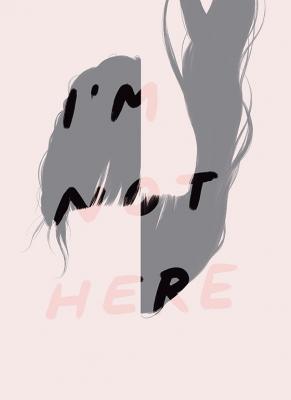While reading GG’s new graphic novel, I’m Not Here, I was reminded of a short story by Delmore Schwartz, in which the narrator goes into a cinema and, much to their amazement and dismay, finds that the film being screened is of their parents’ first meeting. Knowing the sorry end to that story, the spectator must nonetheless sit through the film as a sense of helplessness and alienation sets in.
The protagonist of I’m Not Here is also drifting between memory and waking life. She lives in the suburbs and is torn by restlessness and a sense of daughterly duty. Her immigrant parents appear in ghostly sequences, trying futilely to heal their own trauma. She is haunted by her inability to rescue or satisfy them. There’s a galactic emptiness and a profound dignity to the narrator as she shuttles through spare rooms, empty suburban streets, searching.
What gives I’m Not Here its tension is the narrator’s struggle to find a sense of home. Throughout, the concept of home is unstable. Her adulthood apartment dissolves into her childhood home. She sees her father driving on an empty street. He treats her like a stranger and asks her for directions home. The narrator’s mother laments her own immigration: “I shouldn’t have come to this country. I gave up my old life.” In the present tense, the narrator can’t find her house keys and is effectively locked out of her own home; in a flashback to childhood that reverses the scenario, she longs for freedom and one day leaves her family home through her bedroom window. This tension between longing for freedom and longing for home runs through the entire book. The trauma of immigration and the painful passage of childhood into adulthood resonate powerfully through this metaphor of home.
The spare and superb black and white drawings radiate dreaminess and a melancholy reality. The sparse text requires the reader to become active. I’m Not Here is indeed a dance between disappearing and appearing. The narrator, a photographer who develops her own photographs, appears herself in the opening panels in progressive shades of grey, like film revealing its latent images in a chemical bath. Full of mystery, I’m Not Here asks the reader to fill in gaps. We are plunged into the very rootlessness the narrator is experiencing herself.
At the heart of I’m Not Here is a rejection of meta-narratives, of spelling out “why” we become who we are. In its place is the master narrative’s reverse: the worship for tiny things. GG gives this ephemera a royal treatment, suggesting that the stuff of everyday life is life and deserves our reverence: the vein-like structure of grape stems, the 1980s puffy font on a vending machine, the Chinese characters on a plaster bandage package. Through GG’s narrator, we get the luxury of observing the world in minute detail, an awakening experience.
The cinematic quality of I’m Not Here is heightened by the blackout pages between sections that often arrive unexpectedly at emotional climaxes, artfully denying the reader easy resolutions. These intermissions produce the sensation of sitting in a dark cinema after a stunning movie has just ended. I’m Not Here is a starkly beautiful graphic novel about yearning, home, and escape.














